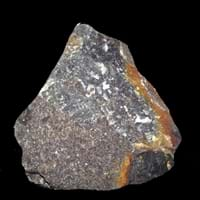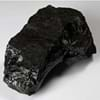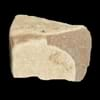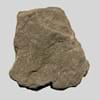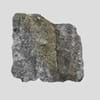Definition
Coal is a combustible black or brownish-black sedimentary rock usually occurring in rock strata in layers called coal beds
Dolomite is a sedimentary rock containing more than 50 percent of the mineral dolomite by weight
Origin
USA
Southern Alps, France
Discoverer
John Peter Salley
Dolomieu
Etymology
From the Old English term col, which has meant mineral of fossilized carbon since the 13th century
From French, from the name of Dolomieu (1750–1801), the French geologist who discovered the rock
Class
Sedimentary Rocks
Sedimentary Rocks
Sub-Class
Durable Rock, Soft Rock
Durable Rock, Medium Hardness Rock
Group
Not Applicable
Not Applicable
Other Categories
Coarse Grained Rock, Fine Grained Rock, Medium Grained Rock, Opaque Rock
Coarse Grained Rock, Fine Grained Rock, Medium Grained Rock, Opaque Rock
Texture
Amorphous, Glassy
Earthy
Color
Black, Brown, Dark Brown, Grey, Light to Dark Grey
Black, Brown, Green, Grey, Pink, White
Durability
Durable
Durable
Appearance
Veined or Pebbled
Glassy or Pearly
Interior Uses
Not Available
Decorative Aggregates, Homes, Interior Decoration
Exterior Uses
Not Available
Garden Decoration, Office Buildings
Other Architectural Uses
Not Available
Not Available
Construction Industry
Cement Manufacture, for Road Aggregate, Making natural cement, Steel Production
As a Flux in the Production of Steel and Pig Iron, As a Sintering Agent in Steel Industry to process Iron Ore, As Dimension Stone, Cement Manufacture, for Road Aggregate, Making natural cement, Manufacture of Magnesium and Dolomite Refractories, Production of Glass and Ceramics, Serves as an Oil and Gas Reservoir rock
Medical Industry
Not Available
Taken as a Supplement for Calcium or Magnesium
Antiquity Uses
Artifacts
Artifacts, Jewellery, Monuments, Sculpture, Small Figurines
Commercial Uses
Alumina Refineries, Electricity Generation, Liquid Fuel, Manufacture of Soap, Solvents, Dyes, Plastics and Fibres, Paper Industry
An Oil and Gas Reservoir, As a Feed Additive for Livestock, Gemstone, Metallurgical Flux, Production of Lime, Soil Conditioner, Source of Magnesia (MgO)
Types
Peat, Lignite, Sub-Bituminous Coal, Bituminous Coal, Anthracite, Graphite
Boninite and Jasperoid
Features
Helps in production of Heat and Electricity, Used as fossil fuel
Host Rock for Lead, Traps for subsurface fluids like Oil and Natural Gas., Zinc and Copper Deposits
Archaeological Significance
Monuments
Not Yet Used
Used
Famous Monuments
Not Applicable
Not Available
Sculpture
Not Yet Used
Used
Famous Sculptures
Not Applicable
Not Available
Pictographs
Not Used
Used
Petroglyphs
Not Used
Used
Figurines
Not Yet Used
Used
Formation
Coal forms from the accumulation of plant debris in a swamp environment which is buried by sediments such as mud or sand and then compacted to form coal.
Dolomite rocks are originally deposited as calcite or aragonite rich limestone, but during diagenesis process, the calcite or aragonite is transformed into dolomite.
Mineral Content
Analcime, Apatite, Barite, Calcite, Chalcopyrite, Chlorite, Chromite, Clausthalite, Clay Minerals, Crandallite Group, Dolomite, Feldspar, Galena, Gypsum, Marcasite, Muscovite or Illite, Pyrite, Quartz, Siderite, Sphalerite, Zircon
Clay Minerals, Pyrite, Quartz, Sulfides
Compound Content
Carbon, Hydrogen, Nitrogen, Oxygen, Sulphur
NaCl, CaO, Carbon Dioxide, Magnesium Carbonate, MgO
Types of Metamorphism
Burial Metamorphism, Cataclastic Metamorphism, Regional Metamorphism
Burial Metamorphism, Cataclastic Metamorphism, Contact Metamorphism
Types of Weathering
Not Applicable
Not Applicable
Types of Erosion
Not Applicable
Not Applicable
Grain Size
Medium to Fine Coarse Grained
Medium to Fine Coarse Grained
Fracture
Conchoidal
Conchoidal
Porosity
Less Porous
Less Porous
Luster
Dull to Vitreous to Submetallic
Vitreous and Pearly
Compressive Strength
Not Available
Cleavage
Not Available
Perfect
Toughness
Not Available
1
Specific Gravity
1.1-1.4
2.8-3
Transparency
Opaque
Transparent to Translucent
Density
1100-1400 g/cm3
2.8-2.9 g/cm3
Resistance
Heat Resistant
Heat Resistant, Pressure Resistant, Wear Resistant
Deposits in Eastern Continents
Asia
Bangladesh, Burma, Cambodia, China, India, Indonesia, Kazakhstan, Malaysia, Mongolia, Pakistan, Turkey, Vietnam
China, India
Africa
Botswana, Kenya, Morocco, Mozambique, South Africa, Tanzania
Morocco, Namibia
Europe
Belgium, Bulgaria, England, France, Germany, Greece, Hungary, Kosovo, Netherlands, Norway, Poland, Romania, Serbia, Slovakia, Slovenia, The Czech Republic, Ukraine, United Kingdom
Austria, Italy, Romania, Spain, Switzerland
Others
Not Available
Not Available
Deposits in Western Continents
North America
Canada, Mexico, USA
Mexico, USA
South America
Brazil, Chile, Colombia, Venezuela
Brazil, Colombia
Deposits in Oceania Continent
Australia
New South Wales, Queensland, Victoria
New South Wales, Queensland, Yorke Peninsula
Coal vs Dolomite Characteristics
Though some rocks look identical, they have certain characteristics which distinguish them from others. Characteristics of rocks include texture, appearance, color, fracture, streak, hardness etc. Coal vs Dolomite characteristics assist us to distinguish and recognize rocks. Also you can check about Properties of Coal and Properties of Dolomite. Learn more about Coal vs Dolomite in the next section. The interior uses of Coal include Not available whereas the interior uses of Dolomite include Decorative aggregates, Homes and Interior decoration. Due to some exceptional properties of Coal and Dolomite, they have various applications in construction industry. The uses of Coal in construction industry include Cement manufacture, For road aggregate, Making natural cement, Steel production and that of Dolomite include As a flux in the production of steel and pig iron, As a sintering agent in steel industry to process iron ore, As dimension stone, Cement manufacture, For road aggregate, Making natural cement, Manufacture of magnesium and dolomite refractories, Production of glass and ceramics, Serves as an oil and gas reservoir rock.
More about Coal and Dolomite
Here you can know more about Coal and Dolomite. The life cycle of a rock consists of formation of rock, composition of rock and transformation of rock. The composition of Coal and Dolomite consists of mineral content and compound content. The mineral content of Coal includes Analcime, Apatite, Barite, Calcite, Chalcopyrite, Chlorite, Chromite, Clausthalite, Clay Minerals, Crandallite Group, Dolomite, Feldspar, Galena, Gypsum, Marcasite, Muscovite or Illite, Pyrite, Quartz, Siderite, Sphalerite, Zircon and mineral content of Dolomite includes Clay Minerals, Pyrite, Quartz, Sulfides. You can also check out the list of all Sedimentary Rocks. When we have to compare Coal vs Dolomite, the texture, color and appearance plays an important role in determining the type of rock. Coal is available in black, brown, dark brown, grey, light to dark grey colors whereas, Dolomite is available in black, brown, green, grey, pink, white colors. Appearance of Coal is Veined or Pebbled and that of Dolomite is Glassy or Pearly. Properties of rock is another aspect for Coal vs Dolomite. The hardness of Coal is 1-1.5 and that of Dolomite is 3.5-4. The types of Coal are Peat, Lignite, Sub-Bituminous Coal, Bituminous Coal, Anthracite, Graphite whereas types of Dolomite are Boninite and Jasperoid. Streak of rock is the color of powder produced when it is dragged across an unweathered surface. The streak of Coal is black while that of Dolomite is white. The specific heat capacity of Coal is 1.32 kJ/Kg K and that of Dolomite is 0.92 kJ/Kg K. Depending on the properties like hardness, toughness, specific heat capacity, porosity etc., rocks are resistant to heat, wear, impact, etc.Coal is heat resistant whereas Dolomite is heat resistant, pressure resistant, wear resistant.

